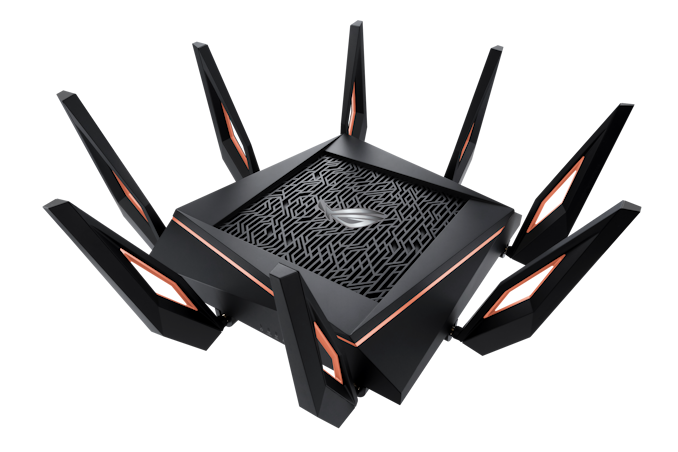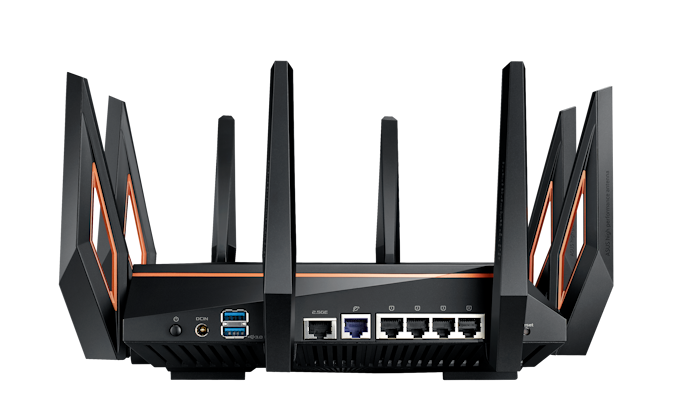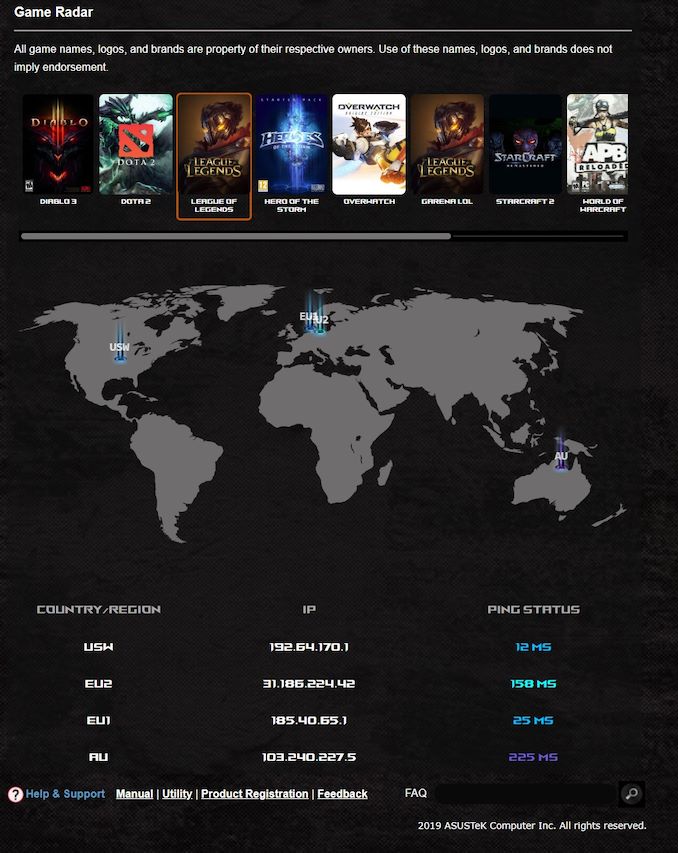AT 101: Wi-Fi 6 And Why You Want It
by Brett Howse on February 12, 2020 8:00 AM ESTThe 2020 AnandTech Wi-Fi Test Bed
We’ve been comfortably using Wi-Fi 5 for some time now, and it is only in the last several months that laptops have been shipping with Wi-Fi 6 based networking, mostly thanks to Intel’s Project Athena which has a requirement of the Intel AX200 Wi-Fi module, which is Intel's first Wi-Fi 6 based module on the market. Previously almost all shipping laptop computers offered Wi-Fi 5, and even a few with the latest Intel wireless adapters such as the Wireless-AC 9260 offered the advanced Wi-Fi 5 options such as 160 Mhz channel width, and MU-MIMO, so its nice to see a move to a new standard which includes these benefits across the board.
Although there are now quite a few Wi-Fi 6 routers and access points on the market, we had some specific criteria to meet. The router had to support Wi-Fi 6, and the 160 MHz channels, but because we are testing for performance, and not for capacity, we need an access point with a multi-Gigabit Ethernet connection. A typical laptop with a 2x2:2 network connection will be connecting to the access point at 2.4 Gbps, so transferring files from Ethernet over Gigabit will be a bottleneck. This does limit the selection somewhat.
After evaluating several models, we decided on the ASUS ROG Rapture GT-AX11000. The name is a mouthful, but meets all of our criteria and more. Most importantly, it offers the coveted 2.5 GbE port.
The ASUS ROG Rapture GT-AX11000
As the name implies, this router from ASUS can support up to 11000 Mbps over wireless, thanks to the 4x4 2.4 GHz, offering 1148 Mbps, and the two 4x4 5 GHz networks each offering 4804 Mbps. This adds up to just under 11000 Mbps, although with wireless the maximum connection speed is pretty much impossible to achieve. With the two separate 5 GHz networks, you can easily split off your consumption devices with higher priority devices, reducing interference on each network.
On the Wide Area Network (WAN) side there is a single 1 Gbps connection, and on the Local Area Network (LAN) side there are four 1 GbE and the single 2.5 GbE connection.
This router is built for capacity, with eight external antennae, and being a gaming router it also offers plenty of RGB lighting options. For those that don’t need the lighting, it can be turned off. ASUS also some tools to change the priority of gaming packets to reduce latency, assuming your network is that busy, and specifically prioritizes traffic from other ROG devices to make setup as easy as possible. ASUS even includes a utility to ping the various game servers for popular multiplayer games to provide you a map of latency to each one.
The GT-AX11000 also integrates with the ASUS AiMesh networking equipment to provide a whole-home mesh network, if even a router of this size can’t cover the entire house, either due to size or building materials blocking the signal.
For testing, the router is used in the access point mode, with the LAN connecting being over the 1 Gbps Ethernet, and a server connected directly to the router in the 2.5 Gbps port.













149 Comments
View All Comments
PyroHoltz - Monday, February 17, 2020 - link
This was my understanding as well, AX = full duplexthomasg - Thursday, March 5, 2020 - link
802.11ax is NOT full-duplex.No practical full-duplex radio system exists at this point in time.
thomasg - Thursday, March 5, 2020 - link
You might have mistaken the use of OFDMA as multiple-acces scheme, but OFDMA does not make it full-duplex, it still is entirely and strictly half-duplex.jeads - Tuesday, April 6, 2021 - link
AX is NOT full duplex, its still half duplex. There is talk, but none that I've seen yet, of AX routers using 4x4 antenna. Most consumer routers are still 2x2 (dual band), or 3x3 (tri-band). 4x4 (quad band?), while not true full duplex, will emulate as much.Vorl - Wednesday, February 19, 2020 - link
You also forgot to mention that it's shared. your WIFI router can go 3.6gb/s, but your devices even in a perfectly isolated environment all have to share that bandwidth. You don't get 3.6gb/s to each device.Gasaraki88 - Thursday, February 13, 2020 - link
It sounds faster on paper. If you ACTUALLY look at the speed of wifi on the AC 5GHz band with 2 of the same AC routers connected to each other, it is not faster than hard wire gigabit connection. Look at some router reviews.PEJUman - Thursday, February 13, 2020 - link
this is just one of those rare inflection points (fast ethernet with 802.11n was similiar), which brought gigabit ethernet into mainstream.I have been running 10 Gb ethernet on copper, mixed cat 5e and '7' + Wifi 5 (802.11AC) network in the house for the past 4 years, if you are patient, you can find deals on 10 Gb stuff here and there. Market acceptance on 10 Gb is still quite slow, but I am hoping 5 or 2.5 Gb will be better at getting down to affordable price points.
azfacea - Saturday, February 15, 2020 - link
wow did u just compare fast ethernet to 802.11n ?? one of the most ignorant comments i have read in all of internet. u have no idea what you are talking about gigabit ethernet existed in mainstream (sub 1000$ desktop) in 1999. 802.11n wasnt in the mainstream until no less than a decade after thatPEJUman - Monday, February 17, 2020 - link
gigabit ethernet existed, but gigabit routers does not, at least not at the affordable, mainstream price point. It is not until 'n' that you get gigabit for essentially no premium.yetanotherhuman - Friday, February 14, 2020 - link
Nah, most access points only have a 1Gbit link, and latency and packet loss are always going to be shit on wifi compared to a wired connection.Also, 2.5, 5, 10 and 40 Gbps Ethernet have been A Thing for a while if you go out of your way.